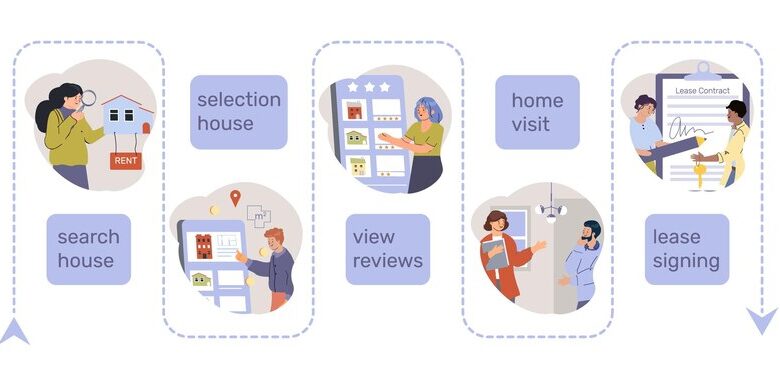Your Topics | Multiple Stories: Uniting Diverse Narratives in a Globalized World

In an age where information flows continuously through a myriad of platforms, the concept of “Your Topics | Multiple Stories” is more pertinent than ever. Every person, community, and culture has a story to tell, each contributing to the vast, intricate web of human experience. As we move through a rapidly changing world, exploring and embracing multiple narratives becomes essential for building empathy, fostering understanding, and confronting global challenges. In this article, we will delve into the power of diverse stories, how they shape our perceptions, and why they are vital for a connected, compassionate society.
The Value of Multiple Stories
“Your Topics | Multiple Stories” is not just a slogan—it’s a call to action. In a world that is increasingly interconnected, it’s critical to open ourselves to the vast variety of stories that surround us. Each story, whether it is personal or collective, offers a new perspective, a new lesson, and a deeper understanding of the complexities that define our world. These stories allow us to challenge assumptions, broaden our viewpoints, and gain insight into the diverse lives that exist within our shared world.
1. A Tapestry of Human Experience
Every story is a thread in the grand tapestry of human existence. From the stories passed down through generations to those shared on modern platforms like social media, the breadth of narratives offers a wide range of perspectives on life’s fundamental questions: What does it mean to be human? What is the role of love, family, and community? How do we cope with loss, celebrate victories, and face the uncertainties of the future? By embracing multiple stories, we can gain a richer, more nuanced understanding of our own lives and the world around us.
The more stories we hear, the more we realize how interconnected our experiences are. Despite differences in culture, location, or background, the emotions and challenges we face are often universal. The joy of a newborn’s first laugh, the pain of loss, the search for purpose—these are experiences that transcend borders and bind us together. Multiple stories help us find our common humanity, and in doing so, they foster unity in diversity.
2. Expanding Our Horizons
One of the most compelling reasons to explore multiple stories is the opportunity to broaden our understanding of the world. As technology continues to shrink the distances between us, we are no longer limited to the stories from our immediate surroundings. We can access stories from every corner of the globe, whether through books, documentaries, films, or online platforms. These stories provide us with insights into different cultures, traditions, and histories, offering a window into lives and experiences that may otherwise remain out of reach.
Reading about the lives of individuals from different backgrounds—whether it’s the story of an immigrant striving for a better life or a scientist battling climate change—can deepen our empathy and challenge preconceived notions. In an increasingly globalized world, this exposure to multiple stories is invaluable, as it helps us navigate complex social, political, and cultural issues with greater understanding and sensitivity.
3. Challenging Stereotypes and Prejudices
A common danger in a world that feels divided is the rise of stereotypes and misinformation. When we are limited to a narrow range of stories, it’s easy to form inaccurate or one-dimensional views of people, groups, or entire countries. This can lead to the perpetuation of harmful stereotypes and prejudices. By engaging with multiple stories—those that reflect the diversity of human experiences—we can dismantle these stereotypes and build a more accurate, compassionate view of others.
For example, stories that center on marginalized voices—whether they belong to women, racial minorities, LGBTQ+ individuals, or people from different socioeconomic backgrounds—allow us to hear experiences that have long been underrepresented in mainstream media. These stories challenge the dominant narratives and provide a richer, more diverse picture of the human experience.
The Role of Creators in Telling Multiple Stories
The creators of stories play a pivotal role in shaping how we perceive the world. Writers, filmmakers, journalists, podcasters, and other content creators hold immense power in shaping public opinion and influencing societal attitudes. As such, it’s essential that they approach the art of storytelling with a sense of responsibility, understanding, and inclusivity.
1. Responsible Storytelling
With the power of storytelling comes the responsibility to represent different voices with accuracy and respect. Authenticity is key in ensuring that stories are not only diverse but also truthful to the cultures, communities, and experiences they aim to portray. Whether the storyteller is part of the group they are representing or an outsider, careful research, consultation, and empathy are crucial in avoiding harmful stereotypes and misrepresentations.
Responsible storytelling involves acknowledging the complexities of different cultures and perspectives and not reducing them to oversimplified narratives. The richness of human experience cannot be captured in a single, monolithic story; it requires nuance, attention to detail, and a willingness to approach sensitive topics with care.
2. The Importance of Diverse Voices
One of the key ingredients for telling multiple stories is ensuring that diverse voices are heard. Historically, many stories have been told from the perspective of the dominant cultural, racial, or social group. However, in recent years, there has been a growing movement to amplify voices from marginalized communities—those whose stories have often been silenced or ignored.
By prioritizing diverse voices in storytelling, we open up new channels for understanding and appreciation. Writers and creators from different backgrounds bring fresh perspectives to familiar themes, offering new ways of seeing the world. When we prioritize stories from underrepresented groups—whether they are from indigenous peoples, people of color, women, or LGBTQ+ individuals—we can begin to rectify historical imbalances in the way stories have been told.
3. The Role of Technology in Expanding Narrative Possibilities
Advancements in technology have revolutionized the way stories are created and consumed. Digital platforms, social media, podcasts, and interactive media now allow people to tell their stories directly, without the need for traditional gatekeepers. This democratization of storytelling has opened up new possibilities for sharing diverse perspectives and experiences.
For example, podcasts have become a popular medium for underrepresented voices, offering an intimate space for storytelling that allows for nuance and complexity. Social media platforms have given rise to grassroots movements that share personal stories of struggle, survival, and triumph. Similarly, video games, virtual reality, and augmented reality are pushing the boundaries of what storytelling can be, enabling audiences to interact with and become part of the stories they are experiencing.
The Impact of Multiple Stories on Society
The stories we consume influence how we understand the world and our place within it. As our access to stories grows, so too does our responsibility to engage with them thoughtfully. Multiple stories provide us with the opportunity to challenge the status quo, spark dialogue, and bring about meaningful change in society.
1. Fostering Empathy and Compassion
By engaging with stories that are different from our own, we open our hearts and minds to the experiences of others. The power of empathy lies in the ability to emotionally connect with someone else’s story—whether it’s a fictional character or a real person. This emotional connection helps bridge divides and fosters a sense of shared humanity.
In a world often divided by political, social, and cultural lines, stories are a powerful tool for bringing people together. They allow us to see the world through someone else’s eyes, helping to break down barriers of misunderstanding and prejudice. The more stories we hear, the more we can cultivate a compassionate, global community where empathy reigns over judgment.
2. Encouraging Critical Thinking
Multiple stories challenge us to think critically about the information we receive. By presenting different viewpoints on the same topic, stories invite us to question assumptions, evaluate evidence, and form our own opinions. In an era where misinformation can spread quickly, this critical engagement with diverse narratives is essential for maintaining an informed and thoughtful society.
When we approach stories with a questioning mind, we are better equipped to make decisions, engage in meaningful discussions, and participate actively in civic life. Multiple stories are not just entertainment—they are a form of education that encourages independent thinking and personal growth.
3. Inspiring Change
Throughout history, stories have been a catalyst for social change. From the civil rights movement to environmental activism, stories have been instrumental in raising awareness and galvanizing action. By telling the stories of those who have been oppressed, marginalized, or silenced, we create a platform for these issues to be addressed on a global scale.
Whether it’s through a documentary that highlights the struggles of climate change activists or a novel that explores the complexities of immigration, stories have the power to inspire people to take action. By engaging with diverse narratives, we are reminded of the power of storytelling to challenge injustice, demand equality, and create a better world for future generations.
Read also: Experience the Power and Efficiency of the Gadgets Induction Cooktop
Conclusion
“Your Topics | Multiple Stories” is a call to embrace the diversity of human experience in all its forms. As we continue to explore new narratives, we become more connected to the world and to each other. Whether through books, films, podcasts, or digital media, the stories we consume shape the way we see ourselves and our place in the world. By opening ourselves to a multitude of stories, we create a more compassionate, understanding, and unified society—one story at a time.



